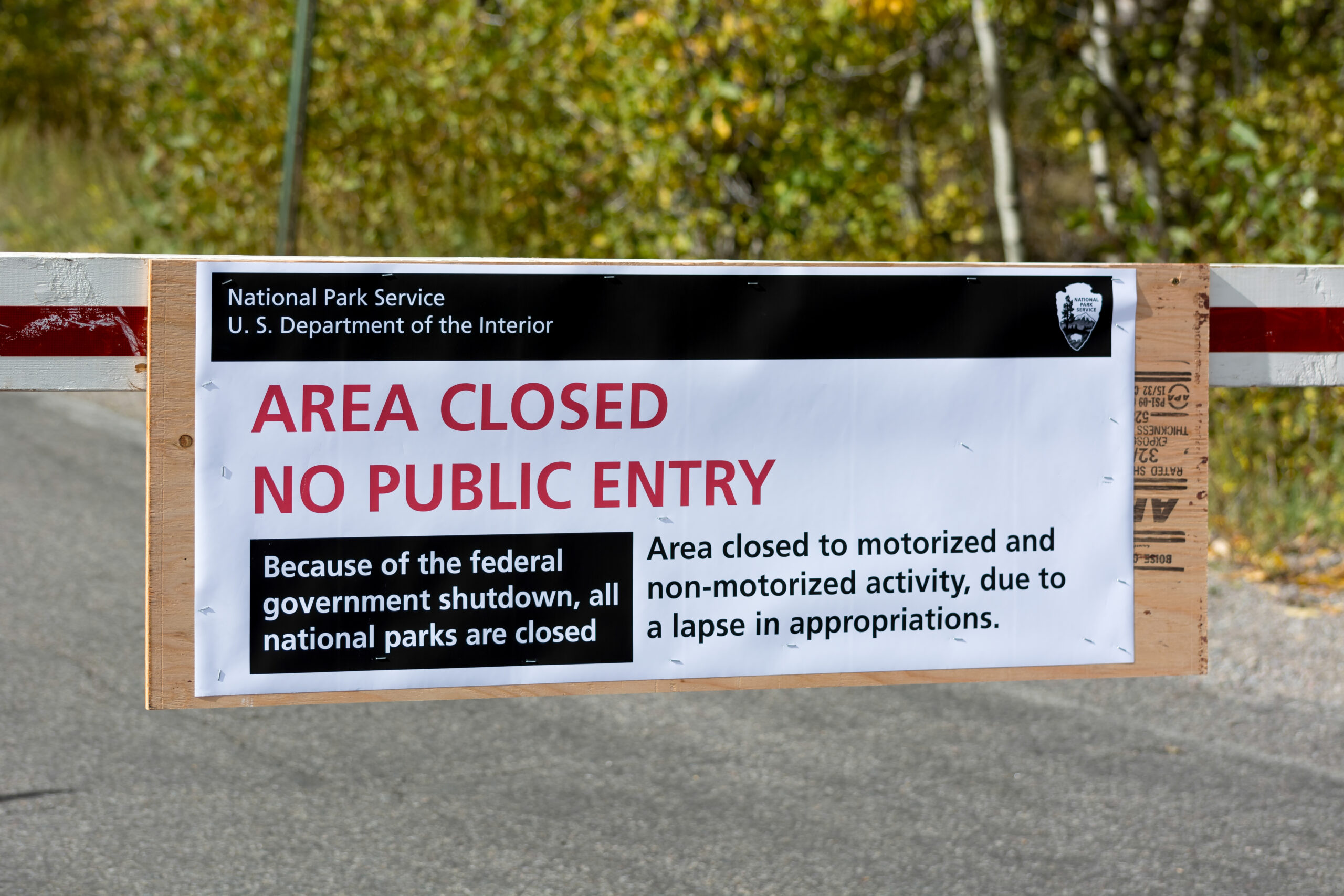News & Updates
The Government Faces a Looming Shutdown: How Do We Learn From History’s Mistakes


Having narrowly sidestepped a government shutdown in October 2023, the government funding and operations situation is once again uncertain. The official fate of whether a federal government shutdown will occur will be decided by Saturday, November 18th at 12:01 am ET. Speaker of the House Mike Johnson has put forth a short-term funding bill to provisionally support the Departments of Agriculture, Energy, and Transportation until January 2024. However, the passage of this proposal remains uncertain.
This intricate maze of government bureaucracy is regrettably not a novel challenge. From 1981 to the present, the U.S. federal government has witnessed 10 shutdowns, impacting all sectors, including the environment and outdoor recreation.
Amidst the 2018-2019 government shutdown, Joshua Tree National Park faced distressing challenges. Pinion pines and juniper trees were felled for illicit fires across 120 unauthorized campsites. A beloved, delicate Joshua Tree, which can have a 150-year lifespan, was backed over and killed by a driver, while 24 miles of off-limits vehicle tracks scarred designated Wilderness Areas.
Operating with a skeleton maintenance crew and grappling with sanitation chaos, the park’s struggles forced Joshua Tree National Park to close.
Throughout the lack of clear and standardized guidance on navigating the outdoors during such tumultuous times, Leave No Trace education provides valuable insights into the challenges and solutions of outdoor recreation during government shutdowns.
The areas most at risk during a government shutdown are the 425 National Parks Service units that are federally funded. A shutdown often leads to an employee furlough, prohibiting most operations and freezing budgets, which in turn leads to locked visitor centers and bathrooms, canceled educational programs, and closed gates.
While every government shutdown looks a little different, they all have the same effect: devastation for outdoor areas. During the 16-day government shutdown in 2013, National Park Service director Jon Jarvis made the decision to close the parks officially.
In contrast, during the 2018-2019 shutdown, the Department of Interior chose to keep the parks open with a skeleton crew. More specifically, just 3,298 employees deemed as “essential employees” were responsible for protecting 80+ million acres of federal national park lands for 35 days. Under normal operations, the number of employees would be upwards of 25,000.
Closing down National Park Service units is straightforward when there is a padlocked gate entrance and exit and visitor centers, which is possible in a park-like Yosemite National Park. On the other hand, many federally managed national park locations, such as the Blue Ridge Parkway, the Appalachian Trail, and the National Mall, remain physically accessible to the public.
This means that the public can recreate in these areas without knowing that services, such as search and rescue, maintenance, and rest facilities, have been temporarily suspended. Additionally, there are a plethora of affected federal lands outside of the National Park Service, including those managed by the U.S. Forest Service and the Bureau of Land Management. All this to say, even when closures occur, protecting these irreplaceable lands is a nightmare.
What was the result of keeping parks open with limited resources and uninformed park visitors in 2018-19? From a Leave No Trace standpoint, it was mostly mayhem. Closed bathrooms led to scattered human waste. Trash bins were overflowing, leading to wildlife habituation. Rowdy visitors demonstrated reckless behaviors, like driving off-road vehicles illegally, damaging sensitive ecological areas, vandalism, endangered wildlife poaching, and looting historical artifacts.
The lack of infrastructure in a national park unit under a government shutdown goes beyond these visible wildlife and conservation consequences. There are less obvious—yet still monumental—issues within the categories of emergency response, fire suppression, protection of Indigenous artifacts, border surveillance, road maintenance, and snow removal.
Additionally, many outdoor areas occur in close-to-home settings and don’t have a gate that can be simply locked and shut down. That means people can still visit federally managed recreational areas without the typical staff in place to ensure that the land is taken care of and sustained. The bottom line: it falls to the ethics and responsibility of the individual.
Leave No Trace is a conservation solution during a government shutdown (as it is the rest of the year when parks are open!). For a quick guide on responsible recreation during a government shutdown, here are four Leave No Trace essentials for outdoor activities during a shutdown.
If we truly want to advocate for public lands and be responsible visitors to federally managed parks, let’s take it a step further and ensure our knowledge is completely up to speed. Leave No Trace offers a free 45-minute online training Leave No Trace 101, which is English and Spanish language-friendly and lives under our new training umbrella, Training For All.
Sources:
Marion, J.L. (2014). Leave No Trace in the Outdoors. Stackpole Press
https://www.bbc.com/news/world-us-canada-66965637
https://www.npca.org/articles/3590-what-a-federal-government-shutdown-means-for-national-parks
https://www.businessinsider.com/national-parks-damage-government-shutdown-2019-1
Let’s protect and enjoy our natural world together
Get the latest in Leave No Trace eNews in your inbox so you can stay informed and involved.
